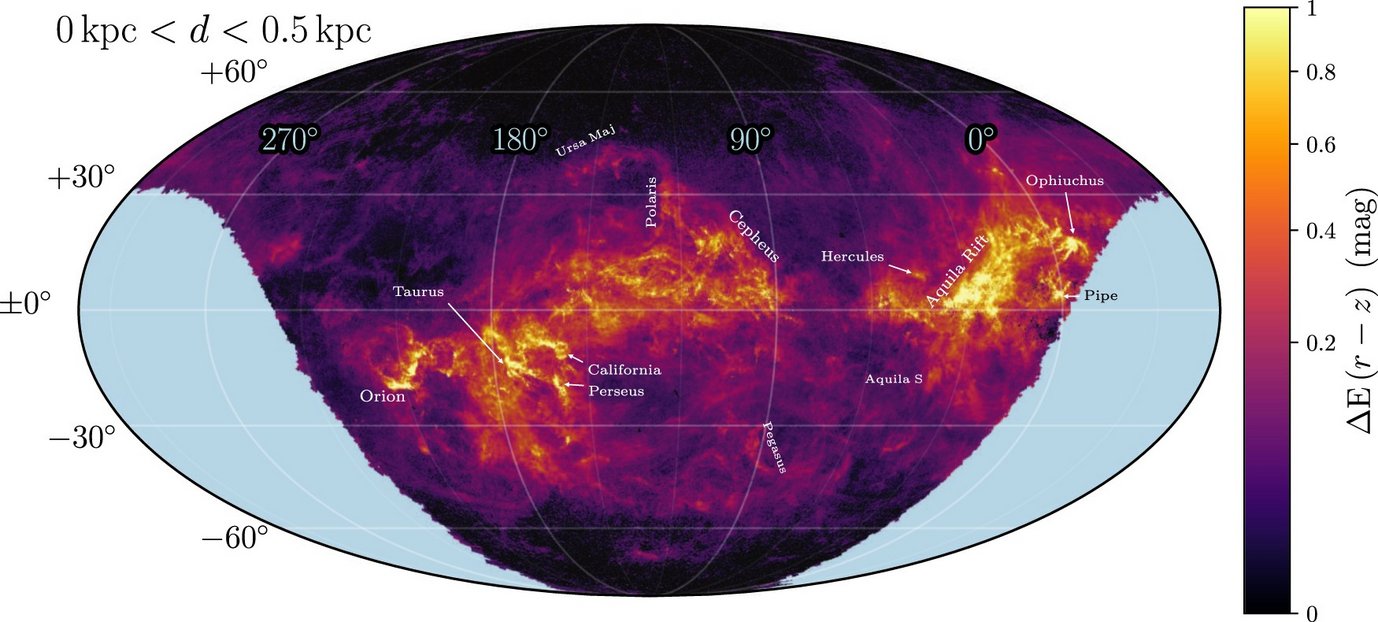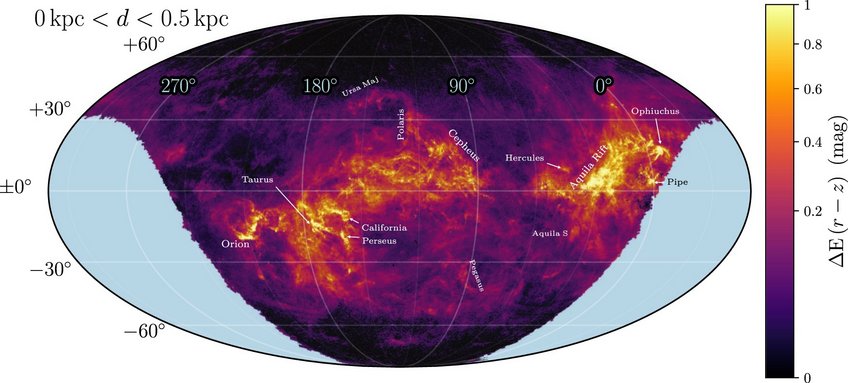3D Dust Modelling
Interstellar dust in the Milky Way impacts a wide range of astronomical observations. In addition, dust plays a key role in the chemistry of the interstellar medium, and it traces the interstellar clouds out of which stars are born. A detailed understanding of the three-dimensional distribution of dust in the Milky Way is thus critical both to correcting astronomical observations and to studying the interstellar medium and star formation. Dust causes background stars to appear fainter and redder, allowing us to map out the spatial distribution of dust by observing stellar colours. This requires modelling of stellar photometry and parallaxes to determine stellar distances and types, as well as foreground dust column densities. Inferences about hundreds of millions of individual stellar are then tied together to map out dust density throughout the Galaxy. Finding ways to model both the stars and dust in a computationally feasible manner is a key challenge, and a number of groups at the MPIA, including the Dust and Dynamics group and the Gaia group, have taken different approaches to this problem.

